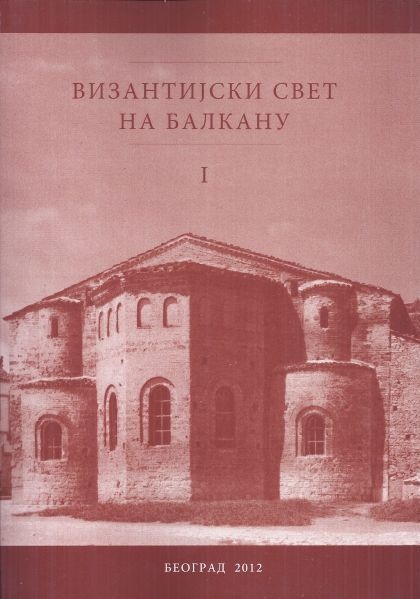Ванбрачна деца царева династије Палеолога
The Illegitimate Children of Palaiologos Dynasty Emperors
Author(s): Miloš Cvetković
Subject(s): Political history, Social history, 6th to 12th Centuries
Published by: Vizantološki institut SANU
Summary/Abstract: The formal status of illegitimate children in Byzantine society was established by the provisions which were derived from Justinian's codification of Roman law. The essence of these principles would serve Byzantine lawyers to regulate the rights of these groups in the ensuing centuries. Legislators tried to ban the existence of a male and female community that was not in accordance with strict Christian morals. On the other hand, the charity preached by the Church obliged them to legally determine that children from such relationships had to be cared for. Still, the children from extramarital affairs had significantly fewer rights than the legal descendants. In cases when heirs existed, whether they were the children or cousins of the deceased, the illegitimate children could inherit only one twelfth of their father’s property.
When it came to the offspring of the Byzantine emperors before the Palaiologos dynasty acceded to the throne, it was recorded that some of the illegitimate princes had the highest court titles and performed the most important duties in the country's government, like the eunuch Basil, the illegitimate son of the emperor Romanos I Lekapenos, or Alexios, the illegitimate son of the emperor Manuel I Komnenos. Still, these cases are to be regarded more as exceptions than as the common rule. It is noticeable that in the earlier epochs of Byzantine history, the illegitimate princesses did not leave any significant trace in the sources, in contrast to the Palaiologan era when most of the illegitimate daughters were recorded. This could be explained by the fact that political marriages, a mutual characteristic of the illegitimate princesses lives, were very important in the times of the Palaiologan dynasty, which was not the case in the earlier history of the Empire. For a long time, the Byzantine court was not ready to accept their daughters being married to foreign rulers, who were regarded as unworthy of family relations with the emperor and his family.
In the sources, news on the illegitimate offspring of the last Byzantine emperors is only incidentally mentioned and mainly regarding the marriages of the emperors’ daughters. Sources note six illegitimate princesses known by name, two anonymous and one illegitimate prince. They were the offspring of five emperors of the Palaiologos dynasty: Maria and Euphrosyne, the daughters of Emperor Michael VIII, Maria, Irene and one anonymous daughter of Emperor Andronikos II, Irene and another anonymous princess who were daughters of Andronikos III and then Zampia (Isabella), who was the daughter of Manuel II and finally Manuel, the son of Emperor John V. Political marriages, being one of the main means of imperial diplomacy during the period of Byzantine military inferiority, were a destiny that the illegitimate princesses shared. Zampia was the only one who was not married to a ruler, but even in her case, the political background of the marriage is obvious. In this regard, there is no significant difference between the legal daughters and those born out of wedlock.
Still, there evidently existed a custom of sending illegitimate princesses to the courts of the Golden Horde and Ilkhanate, maintained over three generations, whereas, in the case of legitimate princesses there were no examples of any of them marrying a non-Christian ruler, except Theodora, the daughter of John Kantakouzenos and even this was due to special circumstances. John Kantakouzenos’ weak position during the civil war in Byzantium and the necessity of making a stronger alliance with the Turks forced him to make such an extraordinary decision. The legitimacy of his coronation was also disputed by the Ecumenical Patriarch John XIV Kalekas and the emperor John V Palaiologos, so therefore, it is questionable if his daughter was considered a princess at the time. George Ostrogorsky noted that there had been a time when Romans looked down on even the greatest Christian leaders as unworthy of marriage to Byzantine princesses and that soon there came a time when some of them would end up in eastern rulers’ harems. It is possible that sending illegitimate princesses to the eastern rulers’ courts was supposed to obscure the fact that the Byzantine court was forced to establish family ties with a barbarian family.
Book: Византијски свет на Балкану I-II
- Page Range: 397-415
- Page Count: 19
- Publication Year: 2012
- Language: Serbian
- Content File-PDF

